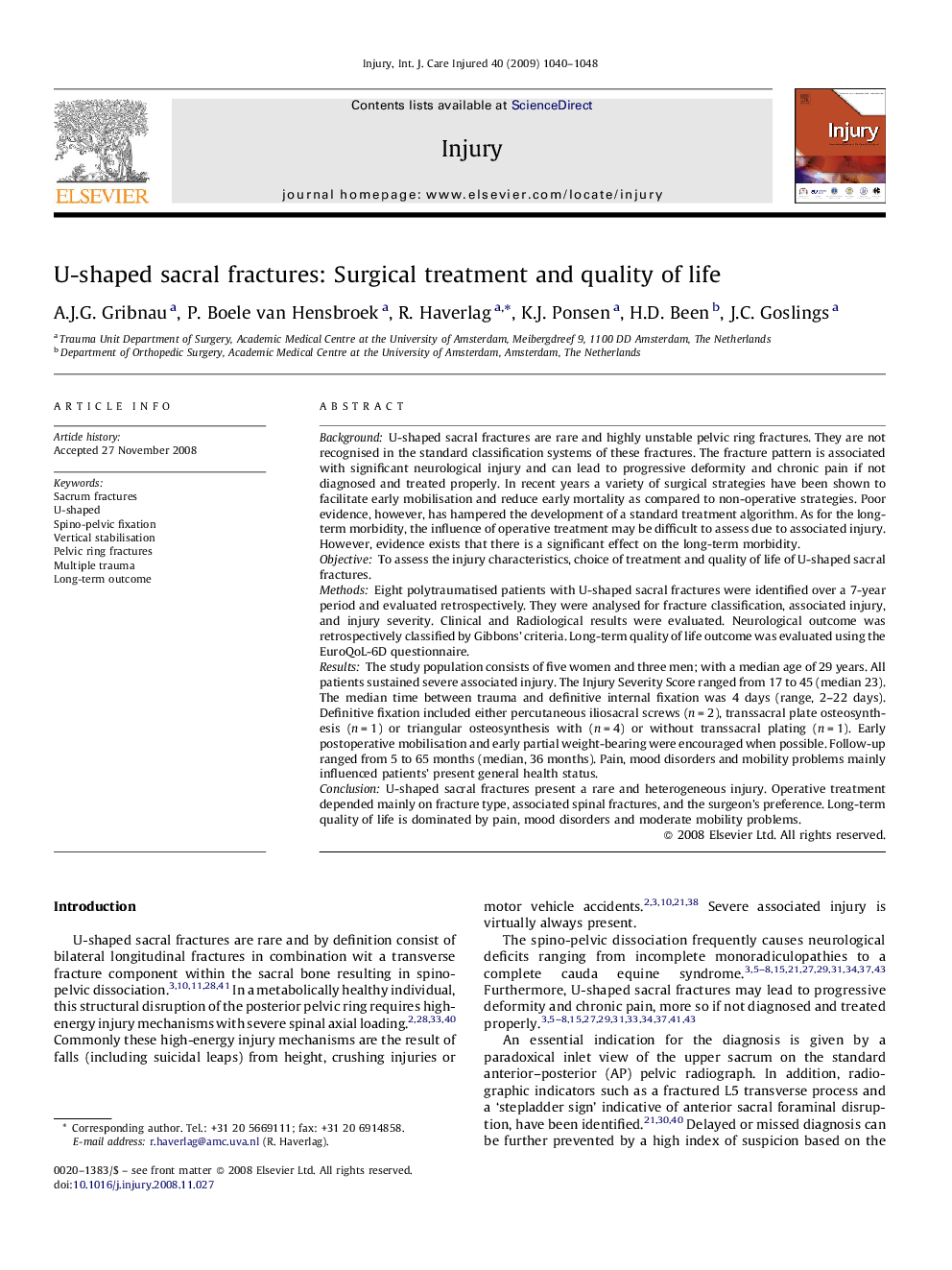| کد مقاله | کد نشریه | سال انتشار | مقاله انگلیسی | نسخه تمام متن |
|---|---|---|---|---|
| 3240951 | 1206060 | 2009 | 9 صفحه PDF | دانلود رایگان |

BackgroundU-shaped sacral fractures are rare and highly unstable pelvic ring fractures. They are not recognised in the standard classification systems of these fractures. The fracture pattern is associated with significant neurological injury and can lead to progressive deformity and chronic pain if not diagnosed and treated properly. In recent years a variety of surgical strategies have been shown to facilitate early mobilisation and reduce early mortality as compared to non-operative strategies. Poor evidence, however, has hampered the development of a standard treatment algorithm. As for the long-term morbidity, the influence of operative treatment may be difficult to assess due to associated injury. However, evidence exists that there is a significant effect on the long-term morbidity.ObjectiveTo assess the injury characteristics, choice of treatment and quality of life of U-shaped sacral fractures.MethodsEight polytraumatised patients with U-shaped sacral fractures were identified over a 7-year period and evaluated retrospectively. They were analysed for fracture classification, associated injury, and injury severity. Clinical and Radiological results were evaluated. Neurological outcome was retrospectively classified by Gibbons’ criteria. Long-term quality of life outcome was evaluated using the EuroQoL-6D questionnaire.ResultsThe study population consists of five women and three men; with a median age of 29 years. All patients sustained severe associated injury. The Injury Severity Score ranged from 17 to 45 (median 23). The median time between trauma and definitive internal fixation was 4 days (range, 2–22 days). Definitive fixation included either percutaneous iliosacral screws (n = 2), transsacral plate osteosynthesis (n = 1) or triangular osteosynthesis with (n = 4) or without transsacral plating (n = 1). Early postoperative mobilisation and early partial weight-bearing were encouraged when possible. Follow-up ranged from 5 to 65 months (median, 36 months). Pain, mood disorders and mobility problems mainly influenced patients’ present general health status.ConclusionU-shaped sacral fractures present a rare and heterogeneous injury. Operative treatment depended mainly on fracture type, associated spinal fractures, and the surgeon's preference. Long-term quality of life is dominated by pain, mood disorders and moderate mobility problems.
Journal: Injury - Volume 40, Issue 10, October 2009, Pages 1040–1048